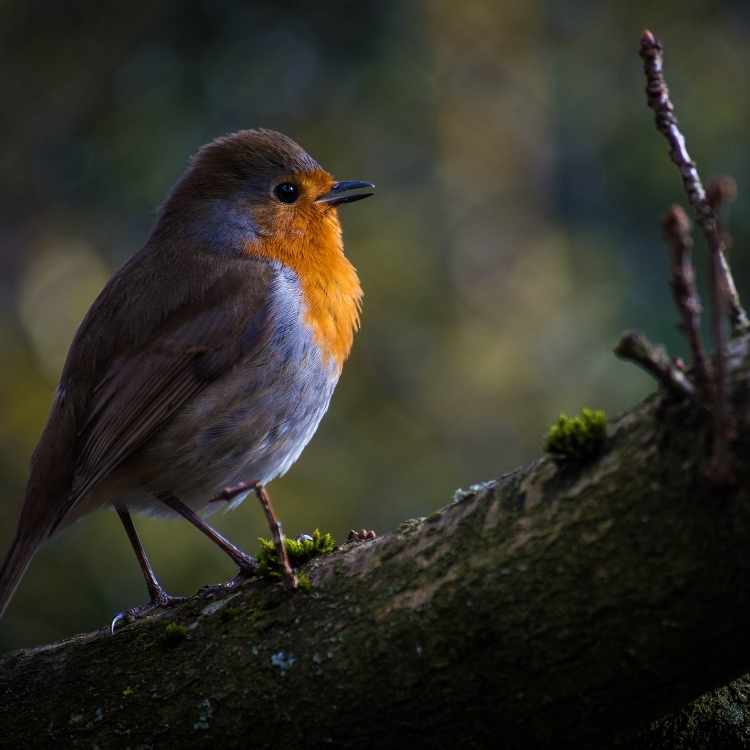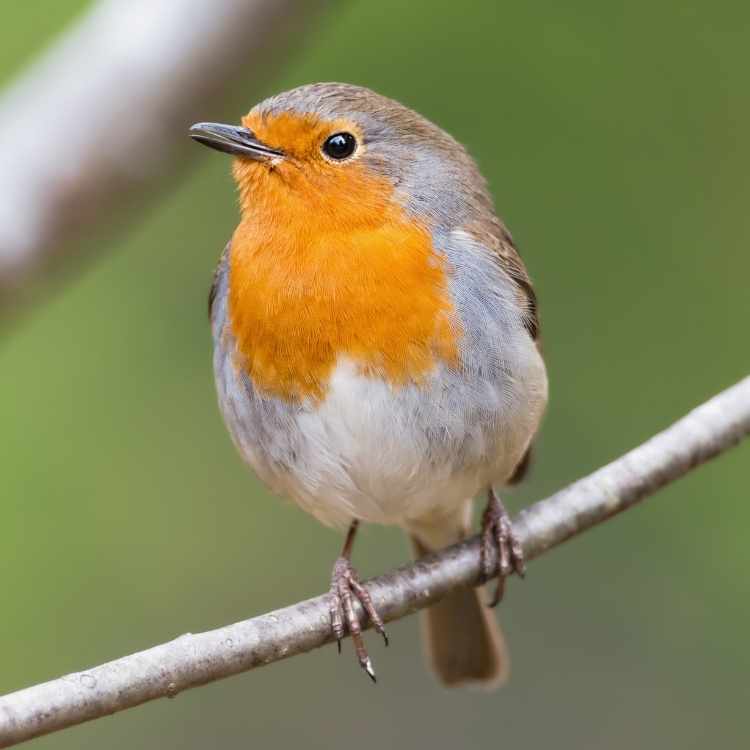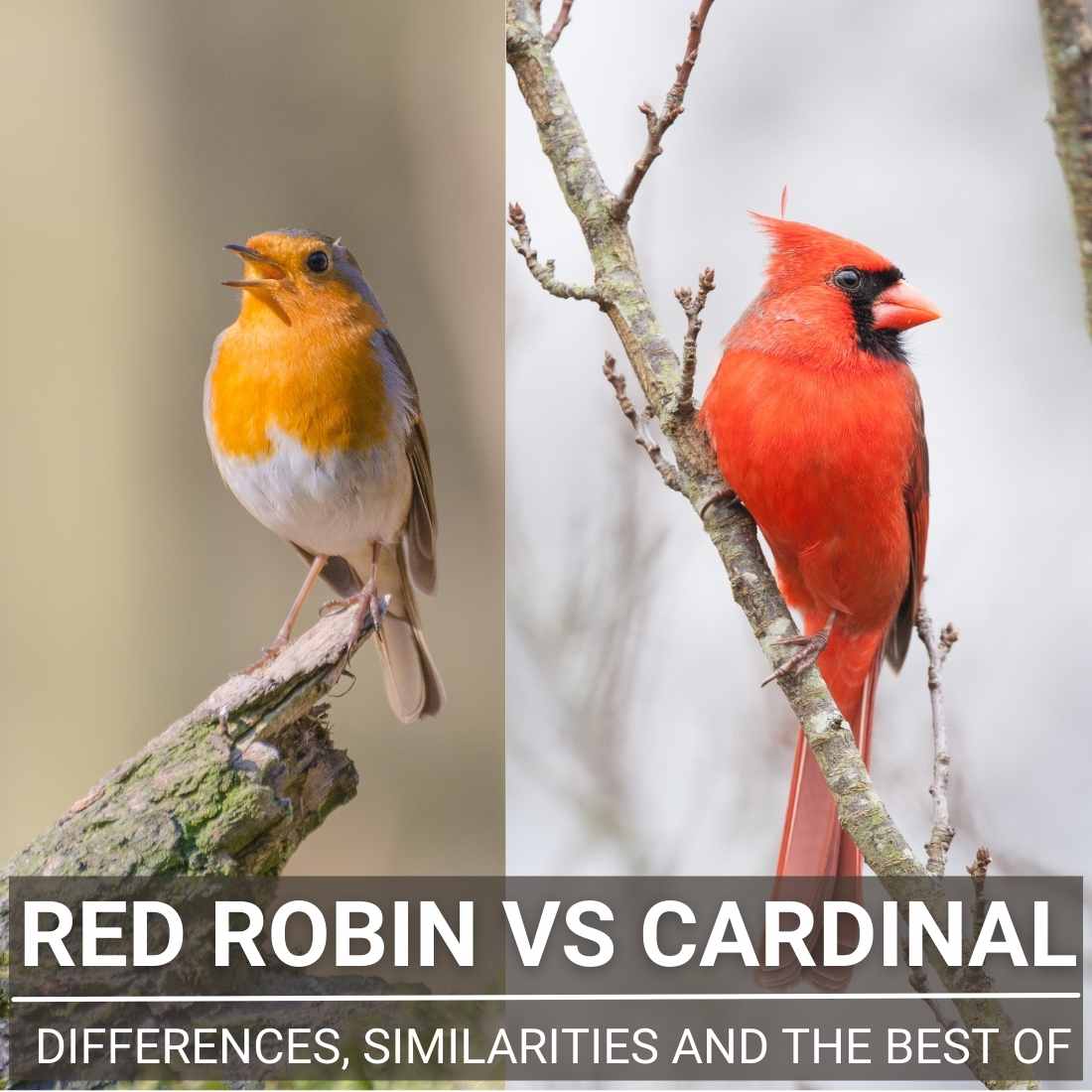Red Robin vs Cardinal: two vibrant and enchanting birds that often steal the show in our backyards. But have you ever wondered what sets them apart? In this delightful article, we’ll explore the captivating world of these feathered friends, from their mesmerizing songs to their fascinating behaviors.
Table of Contents
Discover the key differences and the little-known secrets that make each species unique. So, let’s dive in and unravel the colorful mysteries of Red Robins and Cardinals!

Appearance
Size and Shape
Robins and cardinals have different body sizes and shapes. Robins are generally larger, with a length of 9-11 inches and a wingspan of 12-16 inches. They have a round body and a long, thin bill adapted for eating insects and fruit.
Cardinals, on the other hand, are slightly smaller, measuring 8-9 inches in length with a wingspan of 10-12 inches. Their bodies are more compact, and they possess a short, thick, conical bill designed for cracking seeds.
Color Patterns and Variations
The robin is known for its rust-colored breast and grayish-brown back and wings. Males and females exhibit similar coloration, though the male’s colors may be slightly more vibrant.
Cardinals, however, display sexual dimorphism, with males sporting brilliant red plumage and females showcasing a duller, grayish-brown color with red highlights on their wings, tail, and crest.
Beak Differences
As mentioned earlier, robins have a long, thin bill ideal for foraging insects and fruit, while cardinals possess a short, thick, conical bill designed for cracking seeds. This distinction in beak morphology reflects the different feeding habits and dietary preferences of these two species.
Wing Differences
Robins have relatively long, pointed wings, allowing them to fly quickly and maneuver efficiently.
Cardinals, in contrast, possess short, rounded wings, which enable them to generate rapid bursts of speed but may limit their agility.
Tail Differences
The robin has a long, squared-off tail, while the cardinal features a shorter, more rounded tail. These differences in tail shape can be helpful when identifying these species in the field.

| Physical Characteristic | Robin | Cardinal |
|---|---|---|
| Size | Larger (9-11 inches in length) | Smaller (8-9 inches in length) |
| Wingspan | 12-16 inches | 10-12 inches |
| Body Shape | Round body | Compact body |
| Beak | Long, thin bill (for insects and fruit) | Short, thick, conical bill (for cracking seeds) |
| Wing Shape | Long, pointed wings | Short, rounded wings |
| Tail Shape | Long, squared-off tail | Short, rounded tail |
| Coloration (Males) | Rust-colored breast, grayish-brown back/wings | Brilliant red plumage |
| Coloration (Females) | Similar to males, slightly less vibrant | Dull, grayish-brown with red highlights |
Behavior
Sociability
Robins are relatively social birds, often seen in loose flocks during migration or foraging together in open areas. Cardinals, however, are more territorial and exhibit a higher degree of aggression, especially during the breeding season. They are typically observed in pairs or small family groups.
Way of Flying
Robins have a characteristic undulating flight pattern, with alternating bursts of wingbeats and brief glides. Cardinals exhibit a more direct, powerful flight, characterized by rapid wingbeats and minimal gliding.
Flocks
As mentioned earlier, robins are more likely to be found in flocks, while cardinals tend to be more solitary or found in pairs. This difference in flocking behavior can help birdwatchers differentiate between the two species.
Songs and Sounds
Robins and cardinals have distinct vocalizations. The robin’s song is a melodic, variable series of phrases, often described as “cheerily” or “cheer-up.” In contrast, the cardinal’s song is a series of clear, whistled notes that vary in pitch and tempo, commonly transcribed as “purty, purty, purty” or “what-cheer, what-cheer.”
Behavioral Differences
When comparing Red Robins to northern cardinals in terms of activity, the Red Robins are pretty active, bounding over those lawns. They will stand straight, their beaks angled skyward, surveying their habitat and surroundings.

When Robins alight, they repeatedly flick their tail downward. Red Robins create enormous flocks throughout the fall and winter and congregate in trees to roost on berries.
Cardinals in the north, on the other hand, like to perch low among bushes and trees. They forage in close proximity to the ground and frequently in pairs. You’ll commonly locate them near those bird feeders, but they’ll be pretty wary of approaching.
They will not approach you until you hear their loud chip metallic tone. This implies that they have developed a sense of trust in their environment.

Cardinals are found in pairs, whereas robins are found in groups. Both of these birds chirp regularly when they reach a new area. And they both show a proclivity for extensively scrutinizing their surroundings; Red Robins are more active in this regard, while cardinals are more docile.
| Behavior Aspect | Robin | Cardinal |
|---|---|---|
| Sociability | Social, often seen in loose flocks | Territorial, often in pairs or small groups |
| Way of Flying | Undulating flight pattern | Direct, powerful flight |
| Flocks | Commonly found in flocks | Mostly solitary or in pairs |
| Foraging Behavior | Ground-foraging, hopping in search of food | Perched in trees or shrubs, seeking food |
| Aggression | Less aggressive | More aggressive, especially during breeding season |
| Lifespan | Average 2-3 years, up to 14 years | Average 3-4 years, up to 15 years |
Habitat and Distribution
Habitat
Robins can be found in a wide range of habitats, including forests, grasslands, urban parks, and suburban gardens. They prefer areas with a mix of trees and open spaces for foraging.
Cardinals also inhabit diverse environments, such as woodlands, swamps, thickets, and suburban gardens. They tend to prefer areas with dense shrubbery for nesting and cover.
Similarities in Habitat Preferences
Both robins and cardinals can be found in a variety of habitats across North America. They are adaptable birds and can thrive in both natural and human-dominated landscapes, making them common backyard visitors.
Distribution
Robins have a vast range, covering most of North America, from Alaska to Mexico. Cardinals, however, are primarily found in the eastern and central parts of the United States, extending as far south as Central America.
Migration
Robins are migratory birds, traveling between their breeding grounds in the northern parts of their range and their wintering grounds in the southern regions. Cardinals, on the other hand, are mostly non-migratory, with some local movements in response to seasonal changes in food availability.
| Habitat and Distribution Aspect | Robin | Cardinal |
|---|---|---|
| Habitat | Forests, grasslands, urban parks, suburban gardens | Woodlands, swamps, thickets, suburban gardens |
| Preferred Habitat Features | Eastern and Central United States, extending to Central America | Dense shrubbery for nesting and cover |
| Distribution | Most of North America, from Alaska to Mexico | Eastern and central United States, extending to Central America |
| Migration | Migratory, traveling between breeding and wintering grounds | Mostly non-migratory, with some local movements |
Breeding and Nesting
Nesting Differences
Robins build cup-shaped nests using grasses, twigs, and mud, often placed in the crook of a tree or on a horizontal branch. Cardinals construct their nests in dense shrubs or small trees, using twigs, grasses, and bark strips, creating a loose, cup-shaped structure.
Breeding
Both robins and cardinals are monogamous, with both parents participating in raising their young. However, their breeding seasons differ slightly.
Robins usually breed from April to July, laying 3-5 eggs per clutch. Cardinals breed from March to September, with 2-5 eggs per clutch.
| Breeding and Nesting Aspect | Robin | Cardinal |
|---|---|---|
| Nest Shape | Cup-shaped nest | Loose, cup-shaped nest |
| Nest Materials | Grasses, twigs, and mud | Twigs, grasses, and bark strips |
| Nest Location | Crook of a tree or on a horizontal branch | Dense shrubs or small trees |
| Breeding Season | April to July | March to September |
| Eggs Per Clutch | 3-5 eggs | 2-5 eggs |
| Monogamous | Yes, both parents participate in raising the young | Yes, both parents participate in raising the young |
Diet and Predators
Food Preferences
Robins primarily consume insects and worms during the breeding season, supplementing their diet with fruit during other times of the year. Cardinals have a more diverse diet, including seeds, insects, and fruit.
Diet
The different diets of robins and cardinals are reflected in their distinct beak shapes and foraging behaviors, as discussed earlier.
Perhaps the most obvious contrast between the two species is their diet. Cardinals are granivorous, which means they feed on grains, seeds, and fruits.
On the other hand, Red Robins are omnivores, which means they consume nearly anything. A robin’s normal diet includes 40% insects and 60% fruits, including insects, spiders, beetles, grasshoppers, termites, crickets, grubs, larvae, and snails.
Predators
Both robins and cardinals face numerous predators, including birds of prey, snakes, and mammals. Nestlings and eggs are particularly vulnerable to predation by species such as crows, blue jays, and raccoons.
| Diet and Predators Aspect | Robin | Cardinal |
|---|---|---|
| Food Preferences | Insects and worms (breeding season), fruit (other times) | Seeds, insects, and fruit |
| Foraging Behavior | Ground-foraging, hopping in search of food | Perched in trees or shrubs, seeking food |
| Beak Adaptation | Long, thin bill for insects and fruit | Short, thick, conical bill for cracking seeds |
| Predators | Birds of prey, snakes, and mammals | Birds of prey, snakes, and mammals |
| Vulnerable Life Stages | Nestlings and eggs at higher risk of predation | Nestlings and eggs at higher risk of predation |
Field Identification Tips
When observing birds in the field, it’s essential to be familiar with some key identification tips that can help distinguish between similar species, such as robins and cardinals. Here are some expanded field identification tips to help you differentiate between these two beautiful birds:
- Coloration: The coloration of the birds is often one of the most striking differences that can be observed. Robins have rust-colored breasts and a grayish-brown back and wings. Males and females look similar, with females being slightly less vibrant. In contrast, male cardinals have brilliant red plumage, while females are dull, grayish-brown with red highlights. This distinction in color can be a quick and effective way to identify the species.
- Size and Shape: Examining the size and shape of the birds can also provide helpful clues for identification. Robins are generally larger, measuring between 9-11 inches in length, with a round body and a long, thin bill suited for catching insects and fruit. Cardinals are smaller, typically measuring 8-9 inches in length, and have a more compact body with a short, thick, conical bill adapted for cracking seeds. Paying attention to these differences in body shape and bill structure can assist in distinguishing between robins and cardinals.
- Songs and Sounds: Listening to the songs and sounds produced by the birds can provide valuable insight into their identity. Robins sing a melodic series of phrases that can be described as a “cheerful carol.” Their song often consists of repeated phrases with a few notes sung in different combinations. Cardinals, on the other hand, produce clear, whistled notes that can have varying pitches and tempos. Their song may include a series of repeated “cheer” or “birdie” phrases. By familiarizing yourself with the songs of both robins and cardinals, you can identify the species by their vocalizations.
- Behavior: Observing the behavior of the birds can help with identification as well. Robins are often seen hopping along the ground, foraging for insects and worms, and are more likely to be found in loose flocks. Cardinals, conversely, are more often seen perched in trees or shrubs, searching for seeds, insects, and berries. They tend to be more solitary or found in pairs. Noticing these differences in foraging and social behavior can aid in distinguishing between robins and cardinals.
- Habitat: Lastly, taking note of the habitat where the birds are observed can provide additional information for identification. Robins can be found in a wide range of habitats, including forests, grasslands, urban parks, and suburban gardens, whereas cardinals prefer woodlands, swamps, thickets, and suburban gardens with dense shrubbery for nesting and cover. Identifying the type of habitat you’re in and the features it contains can help narrow down the possible bird species present.
By considering these field identification tips, you can become more adept at distinguishing between robins and cardinals and gain a deeper appreciation for the unique qualities of each species.
How to attract robins and cardinals into your backyard
To attract robins, provide a mix of trees, shrubs, and open spaces for them to forage, and consider adding a birdbath or shallow water source as they love to splash around. Additionally, offering fruit such as berries or raisins can entice them to visit your backyard.
For cardinals, create a welcoming environment by planting dense shrubs or small trees for nesting and cover, and provide bird feeders filled with sunflower seeds or safflower seeds, which they particularly enjoy. A reliable water source like a birdbath can also help draw them in.
Conclusion
In conclusion, robins and cardinals are two captivating and distinct bird species that can be found across North America. By understanding their unique physical characteristics, songs, behaviors, and habitat preferences, bird enthusiasts and casual observers alike can better appreciate and identify these remarkable creatures.
While there are notable differences between the two species, both robins and cardinals share a remarkable adaptability to various environments, making them delightful and familiar visitors to our backyards and natural spaces.
Also check our bird comparison: Red Robin vs Cardinal and cardinal vs blue jay.
Interesting facts about the Red Robin
No matter where you reside in the US, there is a good chance that you have Red Robins in your backyard. Red robins may often be found early in the spring when they are the first birds to appear among the most frequent songbirds.
Some Red Robins move south for the winter, but the majority of Red Robins remain in the exact location all year. During the winter, they tend to spend more time in the trees, so you may not be able to see them.
The following are some other interesting facts about the Red Robin:
- Robins construct their circular nests in trees.
- The eggs of the robin are light blue in color.
- Every year, robins can have up to three broods. However, a large number of newborns do not survive because the mortality rate of the hatchling is very high.
- Read more about the Robin symbolism.
Here you can check all Red Robin sounds
Interesting facts about Cardinal
In some cases, genetic abnormalities known as xanthochroism can lead cardinals to seem yellow rather than the traditional red color. Because cardinals do not migrate, inhabitants in the eastern portion of the United States can see them throughout the year.
Cardinals may be found in backyards, parks, forests, marshes, and even the desert, all of which have a dense low cover.
Other facts about Cardinals include:
- One interesting fact about Cardinal is that it is one of the few species in which the female sings along with the male. A couple of cardinals may even exchange song phrases, which they may use to communicate with one another throughout the nesting season. Female cardinals will exchange songs with a possible suitor back and forth.
- The Cardinals sing more than 24 different songs.
- Read more about the Cardinal symbolism or also the red Cardinal biblical meaning and the Cardinal feather meaning.
Here you can check all Cardinal sounds
Frequently Asked Questions
Are red robins and cardinals the same?
No, red robins and cardinals are different species with distinct physical characteristics, behaviors, and habitat preferences.
Do cardinals get along with Robins?
Cardinals and robins may coexist in the same environment but generally have little interaction with one another due to differences in their social behavior and foraging habits.
Red Cardinals – Rare or Common?
Red cardinals are relatively common in their native range, particularly in the eastern and central United States. Their vibrant coloration and melodic songs make them popular among bird enthusiasts.



